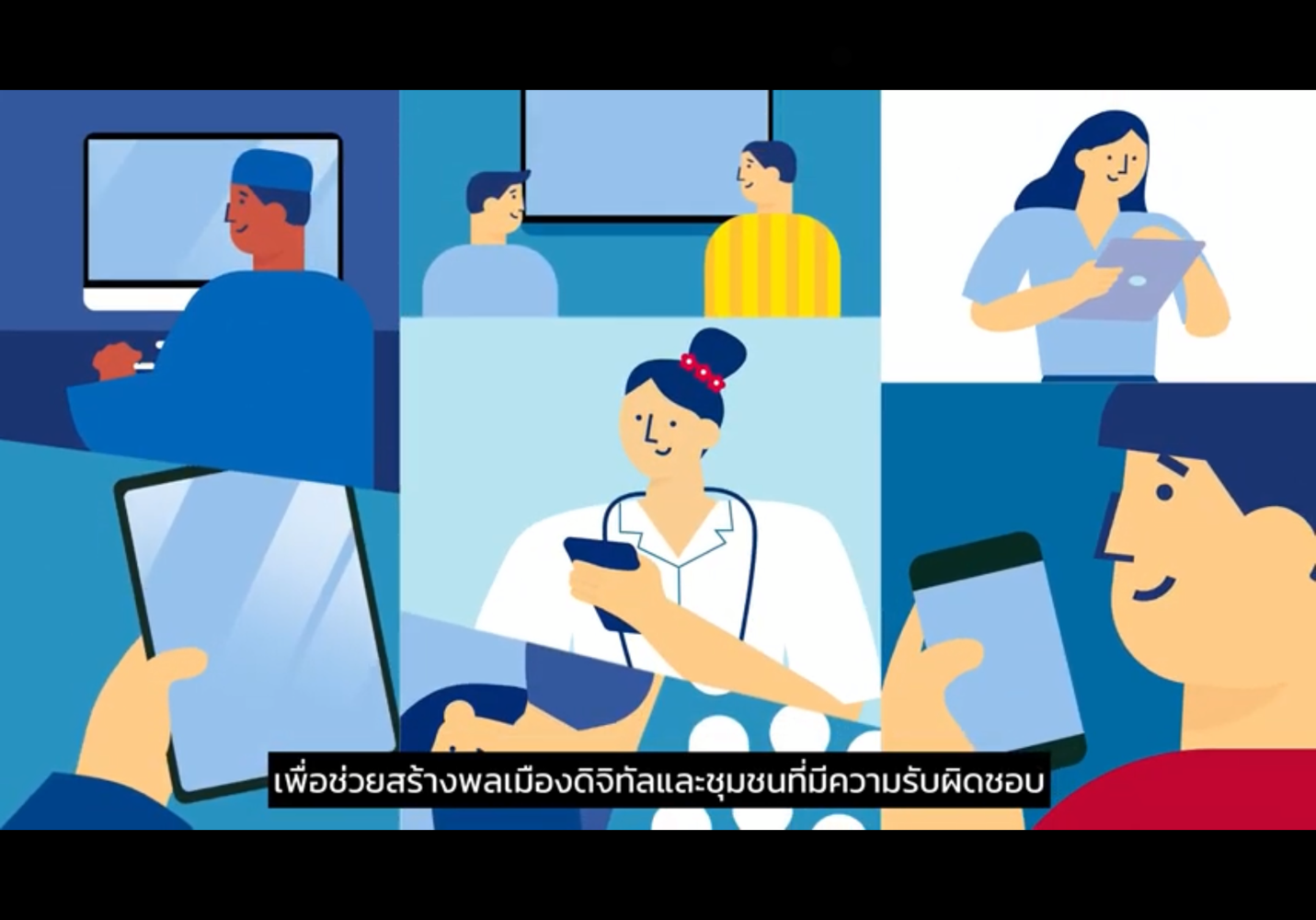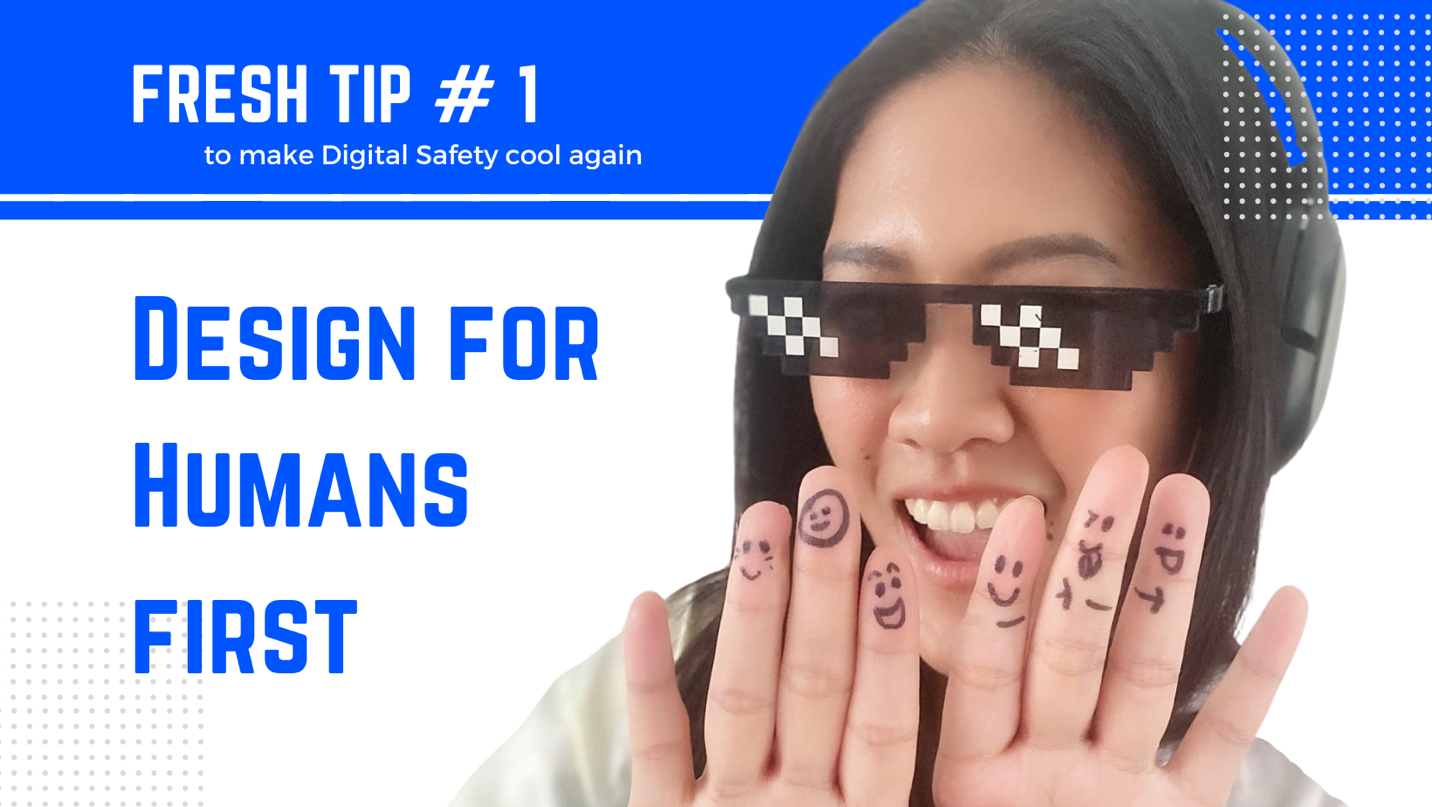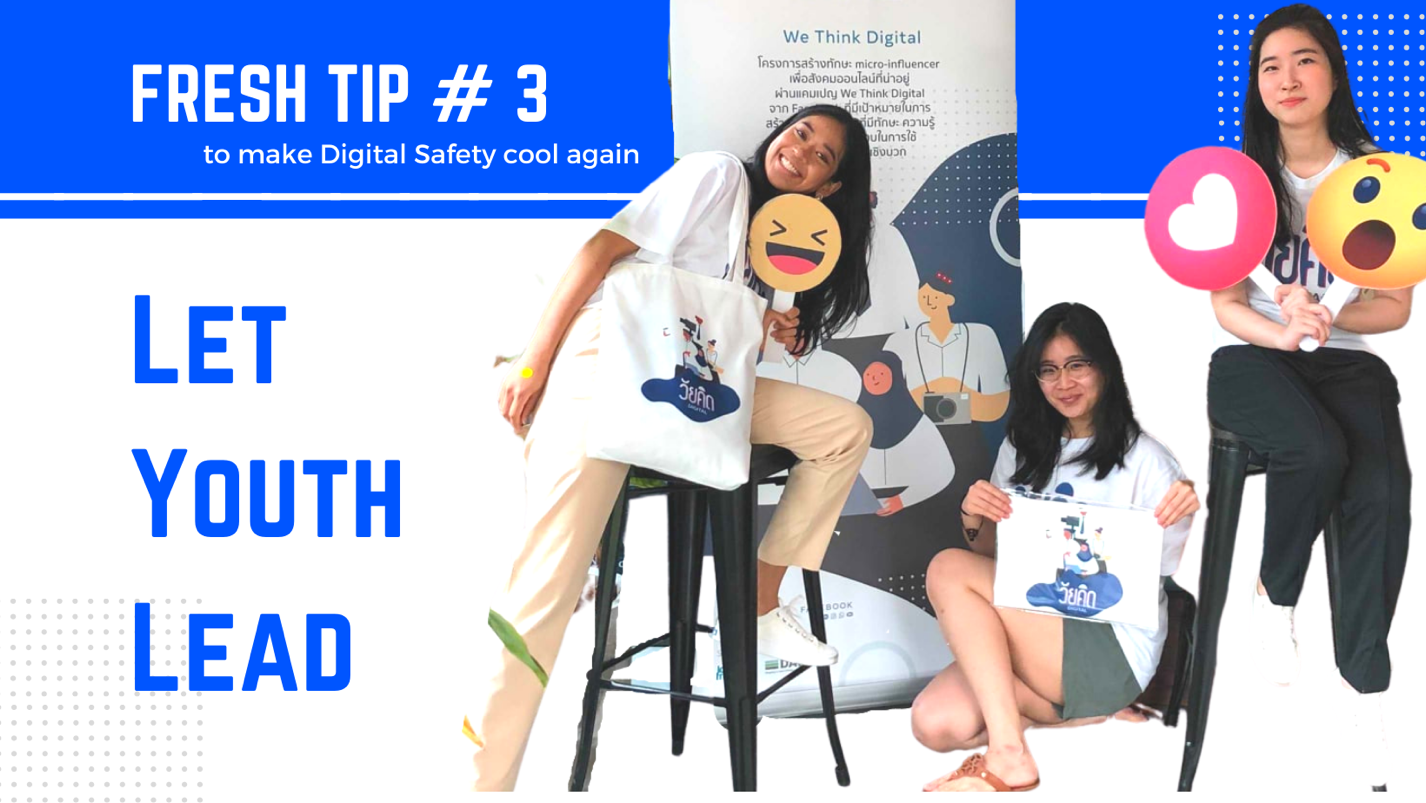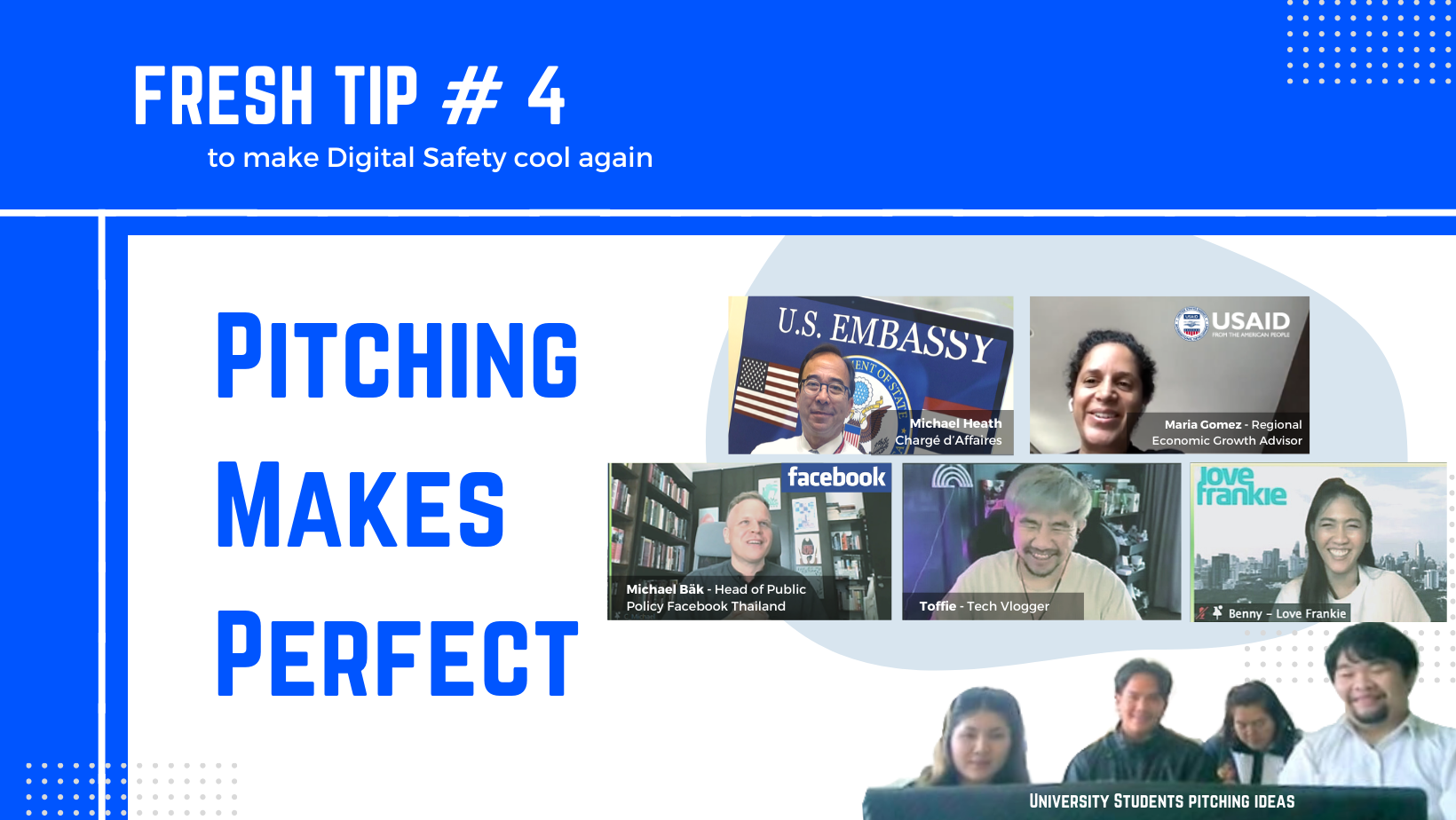Let us know what type of content you'd like to see more of. Fill out our three question survey.
Five Fresh Tips to Make Digital Safety Cool Again: A Case Study from Thailand
Mar 25, 2021
Southeast Asia is one of the world’s fastest-growing regions for digital connectivity. Thai people, for example, spend on average nine hours a day using the internet on their mobile phones. That’s the second highest in the world! And 95 percent of all Thais connected to the internet use Facebook.

We have all heard about the dangers that come with using social media—misinformation, privacy concerns, and cyber bullying—just to name a few. But people in Thailand, like many places around the world, are still very invested in social media platforms, despite the challenges. So how might we turn this challenge into an opportunity?
The U.S. Agency for International Development (USAID) and DAI are collaborating with Facebook Thailand, Love Frankie, a local social change agency, and 400 university students around the country in the Wai Kid Digital Challenge to demystify digital safety and citizenship and educate the public about positive online communication, identity and security, news literacy, and critical thinking through creative videos.
Here are five fresh tips we have learned from the Challenge so far to make sure your next digital safety activity delivers results.
1. Design for Humans First
We know we should change our passwords often, use a virtual private network, and watch out for fake news, but do we care enough to really do these things all the time?

The challenge with our target audience, the Thai public, is usually not the lack of technical capabilities. It’s that they think these cyberthreats will never affect them—until they actually get hacked, cyberbullied, or believe a fake news article, and then it’s too late.
With this in mind, we designed the Challenge with an emphasis on a modified human-centered design (HCD) approach, so that students can craft creative and engaging videos about digital safety and citizenship that resonate with their target audience. However, while we taught the students HCD, we didn’t apply it enough ourselves—at first.
We initially planned to host in-person bootcamps at six universities to maximize our engagements with the students and design the Challenge based on their needs. Then a wave of COVID-19 hit just two weeks before the in-person bootcamps were scheduled to start. We were forced to go 100 percent virtual in a short amount of time.
In our first virtual session, we used lots of text to communicate to the participants about digital safety. Too much text! We also tried one-hour videos, which were similarly unpalatable. Needless to say, students did not engage enough with the materials provided.
So, we looked at the data and asked our end users—the participants—how we could do better. Based on that feedback, we adapted how we interact with our students. Instead of long videos and texts, we started using private Facebook groups, live interactive Zoom sessions, bite-sized infographics, short TikTok-style videos, Facebook events, quizzes, polls, and lots of GIFs.
With these new approaches, participants of the program were much more responsive to our messages and started to get more involved with the program activities. Collaboration, learning, and adaptation really works!
Main Takeaway: Make sure to understand how your audience engages with the technology and design your activities with that in mind. When possible, design it with them!
2. Bring Different Perspectives
We can’t be experts in everything, but we can convene the right people to ensure we hear different perspectives. This gives us the opportunity to cross-pollinate with stakeholders in different fields to co-create an activity together.

In our case, USAID’s Regional Development Mission for Asia and the U.S. Embassy in Bangkok helped spread the message about the importance of digital safety to the public in Thailand and the international community. This lent credibility and emphasized the importance of the students’ input. In addition, Facebook Thailand staff provided their time and expertise to the students on the topic of digital citizenship and provided sessions on how to generate creative mobile content so students can share their knowledge with the Thai public.
Which other groups have the expertise to convey messages creatively that lead to behavior change? Influencers. So, we got them to provide masterclasses in a month-long virtual bootcamp. Examples include:
-
Pailin Wedel, an award-winning Thai-American journalist and filmmaker who produced the Hope Frozen documentary on Netflix, shared tips on storyboarding.
-
Bbinko, an illustrator-influencer with almost 500,000 followers on Instagram, shared her experiences in creating high-impact content and pitching.
-
Toffie, an e-sport and tech vlogger, provided feedback on students’ video pitches.
-
Leading experts on design thinking helped students craft their key messages for the right target audience and a creative psychologist worked with the students on effective storytelling.
Bringing many people together is never without its own set of challenges—aligning on shared objectives, speaking with one voice to our participants, and the logistics to make this happen is always tough—however, it’s worth the effort!
Main Takeaway: By involving stakeholders from a variety of fields, the young people gained fresh perspectives on the topic of digital safety (which makes it cool), and the partners involved are energized by interacting with young people, creating more buy-in for the activity goals.
3. Let the Young People Lead
When we talk about digital citizenship, especially about digital safety and cybersecurity, many people shy away from the topic since everything seems so theoretical and far away from their day-to-day realities. We didn’t want to just give students answers about digital safety. They can Google that themselves, probably faster than most of us working in international development.

Gen Z’s influence in the digital world is undeniable—as are their perspectives. So instead of us telling them what’s important and what digital citizenship and safety should look like throughout the program, we should let them tell us.
The challenge we gave to participants was to convey digital safety messages in a concise, accessible manner, through creative 90-second videos.
To prepare for the development of their videos, we asked students in a bootcamp session to share their thoughts—through the lens of positive online communication, online identity and security, news literacy, and critical thinking—about a case study of a Thai celebrity selling heath supplements.
At first the young people were too shy to speak up, but as we continuously emphasized that this is a supportive place with no judgement—a private Facebook group of just program participants and organizers—students started to feel it was a safe space. And they started having fun!
One student analyzed the importance of news literacy and critical thinking:
“[Influencers have] the power to positively influence many people … It can be tempting to buy a product from someone who is famous in society. The media should do its best to ensure that the information that is publicized is true. As a reader, we need to carefully assess the news and understand the true intent behind the news.”
Through facilitated discussions and self-directed learning, participants are getting the opportunity to truly understand the concepts of digital citizenship and safety to convey this message in their videos.
This is not to say that the ideas generated by the students were immediately ready for the market. It was the mentors’ role to guide the students to refine their concepts, as well as learn with the young people throughout their journey.
Main Takeaway: Organizers should ask more than tell, especially when working with young people. We’re here to foster their creativity, and to learn with them. Young people live digital citizenship every day, they have the solutions—and we should be holding a space to help their insights emerge.
4. Pitching Makes Perfect
Learning digital safety and content production concepts through bootcamps is great, but then what? What did the students learn, and how do we know what they absorbed?

Instead of an evaluation form for the students to fill in as a formative assessment, we asked the students to enter a Shark-Tank-type pitching session. Students were given the task of conveying their creative video concepts on digital citizenship and safety within two minutes to four panelists with expertise in digital ecosystems and content creation.
The pitching session helped us achieve the program goals in several ways.
First, it was a knowledge check for our participants. What would positive online behavior look like in real life? How concisely can they convey their ideas so that complicated theories like online privacy become demystified and actionable? Are they able to do this in ways that are persuasive and have a strong impact on an external audience? How can they make people care about what they are trying to say?
One student shared after the session that, “I really liked this pitching opportunity to share about the topic of positive online communication. If we learn how to share this message well to the panelists, then we might have more impact with the videos as a result.”
Secondly, the pitching session boosted the energy for students like nothing else. A sense of competition (teams that delivered the best pitches won small prizes), combined with public speaking to persuade experts to “buy” their ideas was an adrenaline rush for participants. Many students, of course, had the classic hiccups of running out of time or hitting technical issues where the slides or the microphone did not work—but that’s real life!
Lastly, the pitching session was a chance to engage our key stakeholders, including representatives from the USAID and the U.S. Embassy in Bangkok, Facebook Thailand, prominent Thai influencers, and the organizing team. Because we were working with nearly 400 students, we had to break up the pitching sessions to span over three days. More than 10 volunteers from all parties rotated through to provide constructive feedback to the students so that they could further develop their videos.
For international development professionals, it was a rare treat during the pandemic to the chance to interact with young people. Facebook staff got the chance to participate in meaningful corporate social responsibility activities, as well as the opportunity to educate their most active customers about the benefits of their platform. For social media influencers, this pitching session provided them with brand visibility to their target audience—young people—as well as the chance to give back to their current and future followers.
While the pitching session required lots of time from our partners, it also provided them with the opportunity to contribute to the society where they work, as well as improve their connections to their customer base.
Main Takeaway: Pitching sessions are great ways to verify what participants are learning, to build excitement with the participants, and engage with partners in meaningful ways.
5. Crowdsource the Creativity

What’s Next
Now that the students have completed their pitches, they will work with mentors to develop their videos and start their journeys of becoming micro-influencers and champions of positive digital cyberspaces in Thailand.
By the beginning of May, student teams will have produced nearly 100 videos. Some initial video ideas were happy and light, some were dark and thoughtful. Without the Wai Kid Digital collaborative design, there was no way one project could have dreamed up all these ideas about digital citizenship and safety.
If there is one thing you remember from this blog, please design with, and for, humans in your next program activity, especially if you are focusing on technology. If it is anything like our experiment, the creative outputs will help you get better results.
For more updates on Wai Kid Digital, follow We Think Digital Thailand’s Facebook page. Keep following the Wai Kid Digital project on USAID Asia’s Facebook page, and stay tuned for a wrapup of lessons learned later this year on Digital@DAI.